Recent Articles
Popular Makes
Body Types
2018 Subaru Outback vs. 2018 Subaru Forester: Which is for you?
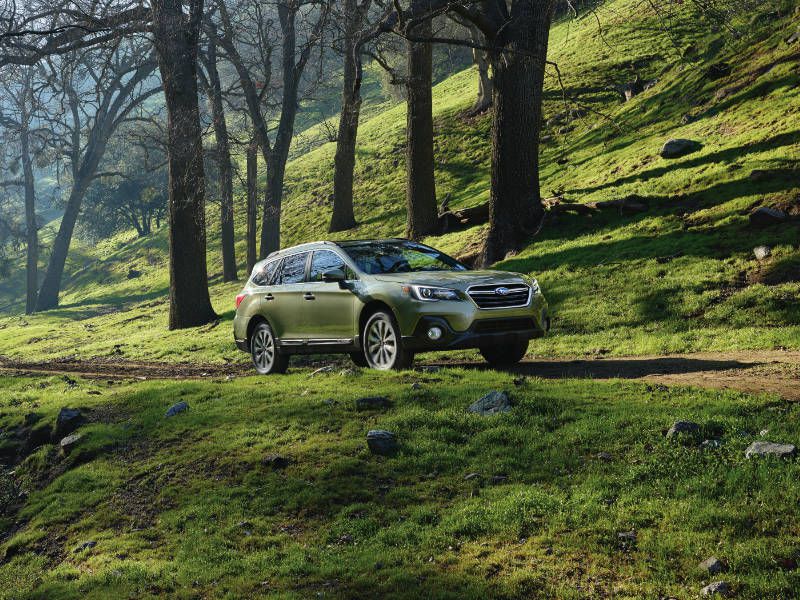
2018 Subaru Outback hero ・ Photo by Subaru
The 2018 Subaru Outback is a five-passenger wagon with standard all-wheel drive. The 2018 Subaru Forester is a five-passenger crossover that also has standard all-wheel drive. These are two similar vehicles from the same brand, so what makes one the better choice?
It all depends on your priorities and exactly what you want out of your new vehicle. Let’s take a closer look at the 2018 Outback and Forester and see which is the better choice for you.
Wagon or Crossover
Once upon a time, station wagons were all the rage. Then came the minivan and all those wagons got kicked to the curb. Today, crossovers are the go-to car for families, but the good old wagon shouldn’t be a thing of the past. That’s what makes a car like the Subaru Outback a standout in the current sea of crossovers.
The Forester is quite comfortable calling itself a crossover and has somewhat more upright styling in line with that label. The Outback is more of a sport wagon with the versatility of a crossover and a shape that leans more toward a traditional wagon. Some will appreciate that the Forester is a typical crossover, while others will prefer that the Outback bucks the trend.
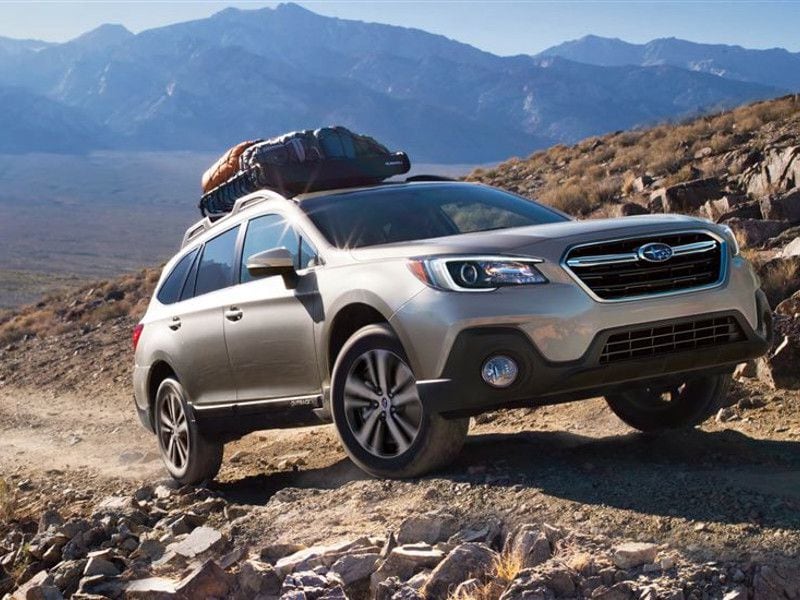
Photo by Subaru
Pricing and Trims
The 2018 Forester is available in six trims, starting with the 2.5i at $22,795. The first trim with the larger engine is the 2.0XT Premium at $29,445, which is only one step below the top 2.0XT Touring with a price of $36,090. Features increase as you move up through the lineup, and with six trims, it’s easy to find one that works with your budget.
The 2018 Outback is also available in six trims starting with the 2.5i at $25,895. As with the Forester, the larger engine is only available on the top two trims, starting with the 3.6R Limited at $35,395. The top Touring brings pricing up to $38,690.
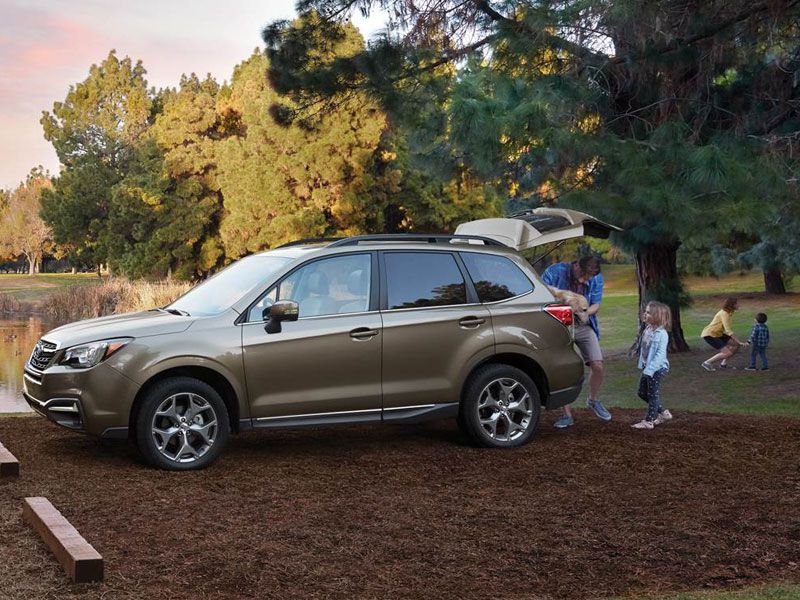
Photo by Subaru
Safety
The Forester is an Insurance Institute for Highway Safety 2018 Top Safety Pick with its top rating of Good in all crash tests except for small front overlap passenger-side, in which received a Marginal rating. The National Highway Traffic Safety Administration gave it the top rating of five stars overall.
The Outback scored slightly higher than the Forester and is an IIHS 2018 Top Safety Pick+ with Good ratings in all crash tests. It also received top marks for its headlights and ease of use for its LATCH system. It came up even with the Forester in NHTSA crash tests with the same five-star rating.
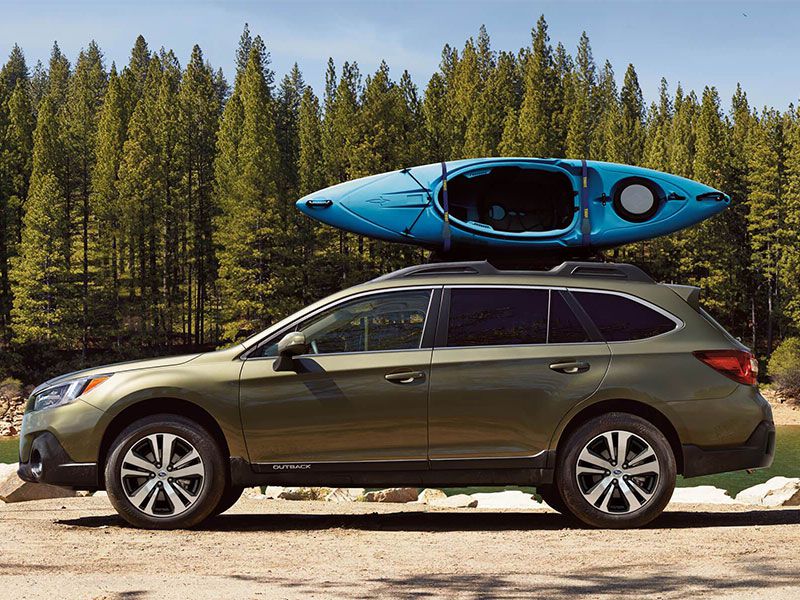
Photo by Subaru
Performance
There are two engine choices for the Subaru Outback. Base models have a 2.5-liter four-cylinder engine with 175 horsepower and 174 lb-ft of torque, while higher trims have a more powerful 3.6-liter six-cylinder engine with 256 horsepower and 247 lb-ft of torque.
The Subaru Forester also has two engines. There's a base 2.5-liter four-cylinder with 170 horsepower and 174 lb-ft of torque, while the more powerful choice this time around is a 2.0-liter four-cylinder turbocharged four-cylinder with 250 horsepower and 258 lb-ft of torque. The numbers between the two models are close, but the Forester's more powerful engine is turbocharged and has more torque — making it a more responsive ride.
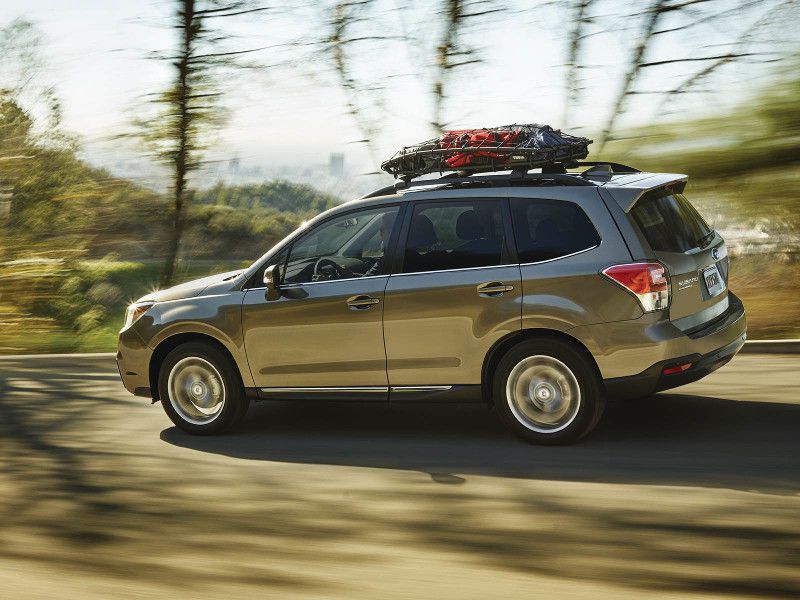
Photo by Subaru
Fuel Efficiency
The Forester gets an EPA-estimated fuel economy of up to 26 mpg in the city, 32 mpg on the highway, and 28 mpg combined with the smaller engine or 23 mpg in the city, 27 mpg on the highway, and 25 mpg combined if you opt for the turbocharged variant.
The Outback comes in with an EPA-estimated 25 mpg in the city, 32 mpg on the highway, and 28 mpg combined with the smaller engine or 20 mpg in the city, 27 mpg on the highway, and 22 mpg combined with the 6-cylinder. So while the two Subarus are equally efficient with their base engines, the Forester gets better mileage if you want more power.
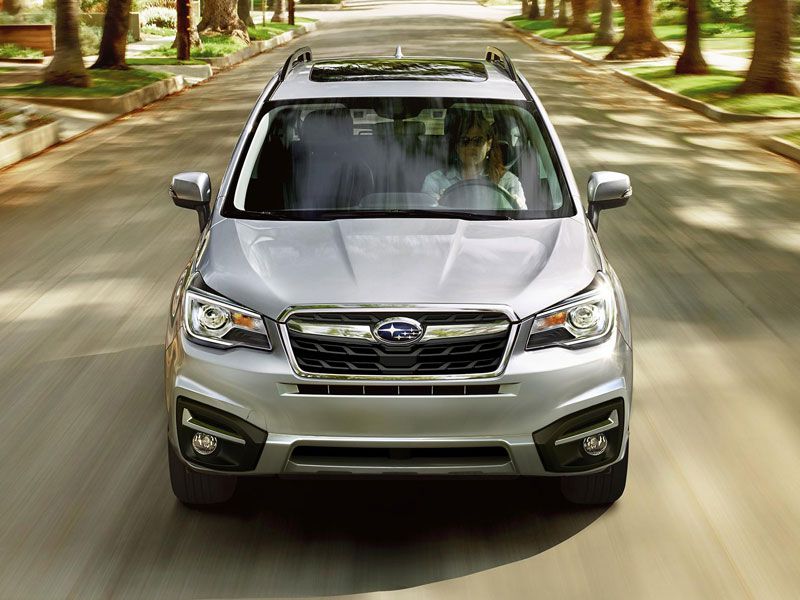
Photo by Subaru
Capability
Subaru is known for building capable vehicles for those with active lifestyles. Both the Outback and Forester live up to that reputation with standard all-wheel drive across the lineup. The Forester has 8.7 inches of ground clearance and can tow up to 1,500 pounds regardless of the trim you choose.
The Outback has the same 8.7 inches of ground clearance, which makes it easy to tackle off-road adventures, but it boasts higher tow ratings. Both the base four-cylinder engine and upgraded six-cylinder can tow up to 2,700 pounds. That’s nearly double what the Forester can manage.
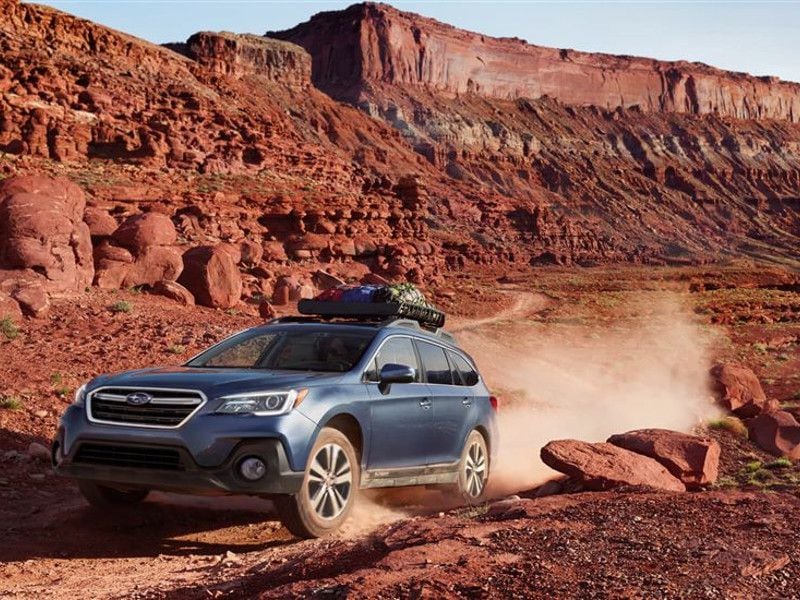
Photo by Subaru
Cargo Capacity
Part of the appeal of crossovers and wagons is their ability to easily hold passengers and cargo. The Forester has 34.4 cubic feet behind the rear seats and 74.7 cubic feet behind the front seats. Those numbers drop to 31.5 cubic feet and 68.5 cubic feet if you opt to go with a moonroof. Its maximum cargo length is 71.9 cubic inches.
The Outback counters with 35.5 cubic feet behind the rear seats and 73.3 cubic feet behind the front seats. The numbers are very close and give the Outback a slight edge if you’ll generally use the rear seat for passengers. The big difference comes in its maximum cargo length of 77.7 inches.
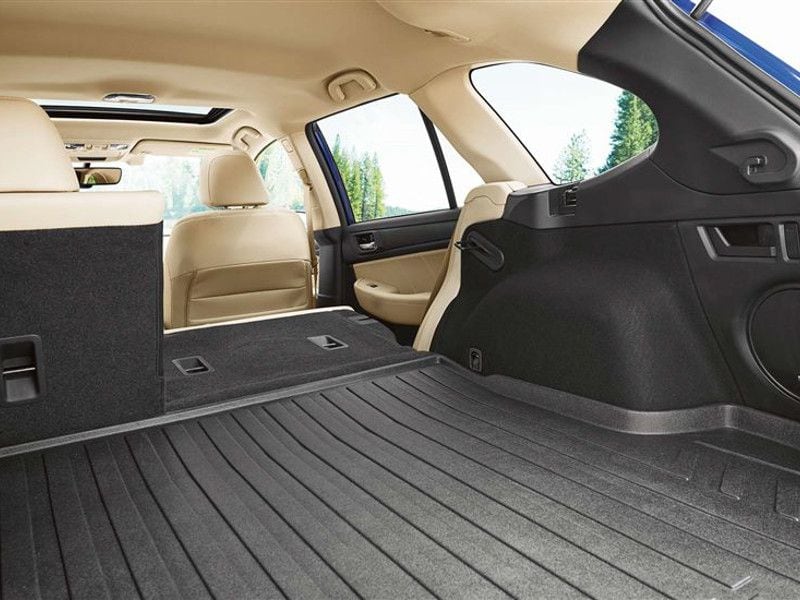
Photo by Subaru
Seating
Both the Subaru Forester and Subaru Outback have room for five passengers, but there’s a difference in how much room those passengers get depending on where they sit and which vehicle you choose. The Outback has 40.8 inches of headroom up front and 38.9 inches in the rear with 42.9 inches of legroom up front and 38.1 inches for the rear.
The Forester offers 41.4 inches of headroom up front and 39.8 in the rear with 43.0 inches of legroom up front and 38.0 inches for the rear. The only place it doesn’t beat the Outback is in rear-seat legroom, and that’s only by 0.1 inches.
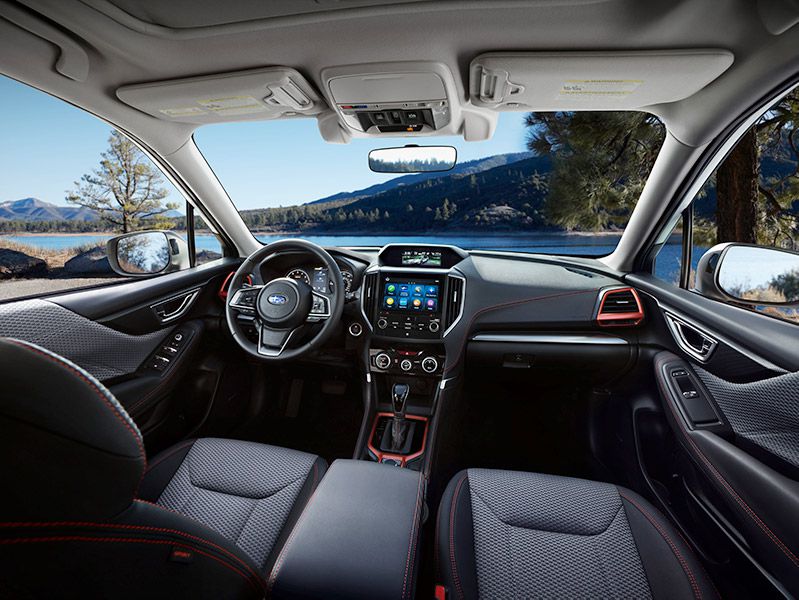
Photo by Subaru
Infotainment
The Subaru Forester offers a 6.2-inch infotainment touchscreen with an available 7-inch touchscreen and a navigation system on select trims. There’s a standard four-speaker audio system with an available six-speaker system or 440-watt Harman Kardon system with eight speakers.
The Subaru Outback takes everything a step further. Its base touchscreen measures 6.5 inches with an available 8.0-inch touchscreen that’s especially helpful when following navigation directions. It has an available Harman Kardon audio system, too, but with 576 watts and 12 speakers. Finally, smartphone connectivity gets a boost with the addition of Apple CarPlay and Android Auto to the entire Outback lineup.
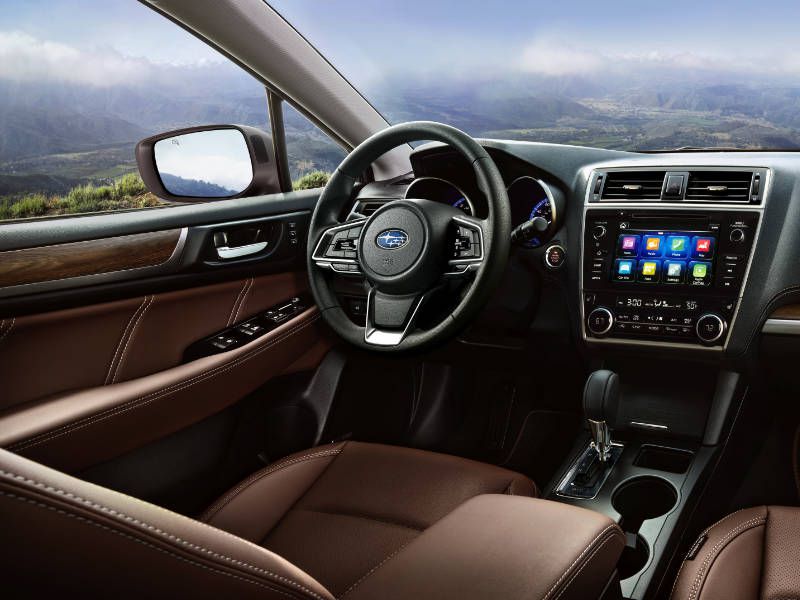
Photo by Subaru
Overall
The Subaru Outback and Subaru Forester are two similar vehicles, but with big differences. The Outback’s updates for the 2018 model year give it a superior infotainment system, and because it's a wagon, it stands out from all the crossovers on the road today. It also gets top safety marks, which is important when you have your family along for the ride.
However, the Outback is slightly more expensive than the Forester, which is a drawback, and the Forester has it beat on fuel economy. The Forester also offers slightly more room for passengers. When choosing between the Forester and Outback, keep these differences between the two Subarus in mind.
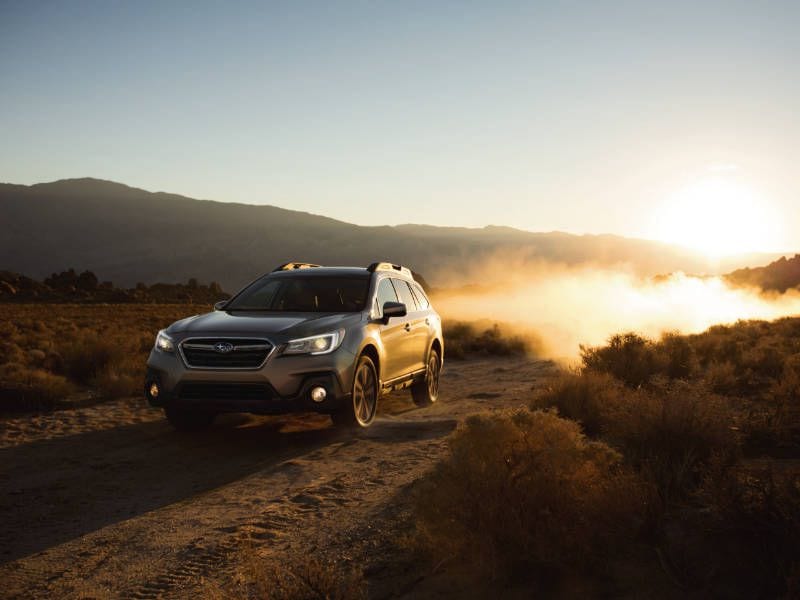
Photo by Subaru